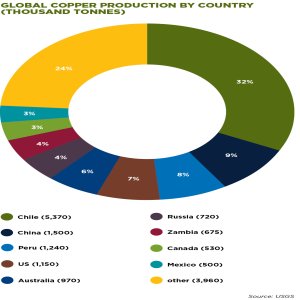Risk Exposure to Geological Hazards

STORY INLINE POST
Natural forces like gravity and weather are constantly shaping and transforming the earth’s crust, bringing with them numerous geological hazards that can threaten the continuity and success of mining operations. Natural disasters are impossible to predict, though with the right technology and knowledge, preventative measures can be taken where natural forces pose a significant threat to mining operations. “The key tools to prevent natural threats are common sense, engineering knowledge, and awareness of the environment surrounding the mining site. Knowing the above, it is possible to choose from several types of equipment to evaluate and analyze the natural hazards in order to minimize or even eliminate them,” says Javier Zúñiga Arriola, Regional Representative of Geobrugg. Mining operations are severely exposed to a wide array of geological hazards such as sinkholes, mudslides, debris flows, rockfalls, slope instabilities, and even mine collapse. Over the centuries these natural threats have destroyed many mining operations and claimed many lives. Adapting to natural threats and finding solutions for safety hurdles have become top priorities for the modern mining industry. The use of new technology and protection systems have had a positive impact on the execution and functioning of mining operations around the world. “If companies employ these technologies they will not suffer downtime caused by rockfalls, slope instability or mudslides, which are very common and could all easily affect productivity by blocking access roads, damaging equipment, and most importantly, putting the lives of workers at risk,” Zúñiga Arriola comments. It is important to know the structural geology of the area, the hydrology, and the geotechnical parameters, as well as analyzing previous natural disasters. Based on this information, companies like Geobrugg can suggest the most adequate protection system for each particular situation. “It is very important to analyze and evaluate every geological risk because we will tailor a solution depending on the geological problem,” he adds. Within the preventative measures category the company provides a great variety of solutions, such as flexible ring net barriers to retain debris flow or high-tensile nets to prevent block break-outs from rock slopes. In term of rockfalls, Geobrugg has designed metal barriers where all elements work together by elastic deformation. The resistance of these barriers is calculated in function with several parameters such as density, velocity, and the volume of the material to stop. These barriers can be from 3 to 9m high and can generally contain energies that oscillate at around 100kj (equivalent to stopping a mass of 350kg at a speed of 90km/h). Geobrugg designed a barrier that can contain a force 8,000kj (equivalent to stopping a mass of more than 20,000kg at a speed of 100km/h), which holds the current world record.
During rainy season other common geological hazards that pose a threat to mining operations are discharges and landslides. The mixture of soil, water and rock traveling rapidly down a slope can create significant damage to mining infrastructure. Geobrugg is able to dimension the true risks and find a solution to them by using flow measurement systems and simulating software such as DEBFLOW. With this type of software the company is able to know the material volume that could be transported, and the velocity and energy it could reach at every point of a certain trajectory. With this type of information an adequate protection system can be built, based on the energies calculated and the location of the infrastructure. “The challenge for Geobrugg has always been to offer its clients the most innovative solutions and products that adapt to all the challenges the mining industry faces, in terms of geological threats,” Zúñiga Arriola comments. “The opportunity to increase the industry’s performance exists on each mining project. It is only a matter of explaining to companies the possible dangers their mining sites face, the protection systems that exist, and the use they have been given in other countries with vast mining experience,” claims Zúñiga Arriola. “The future of the Mexican mining industry is very promising for companies like Geobrugg. Every year several mining projects start producing, as safety standards and performance goals grow, creating new opportunities for the mining safety market to thrive.”





















